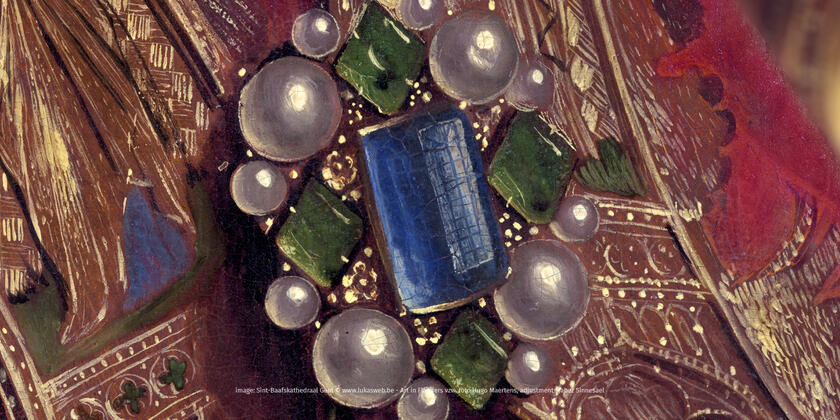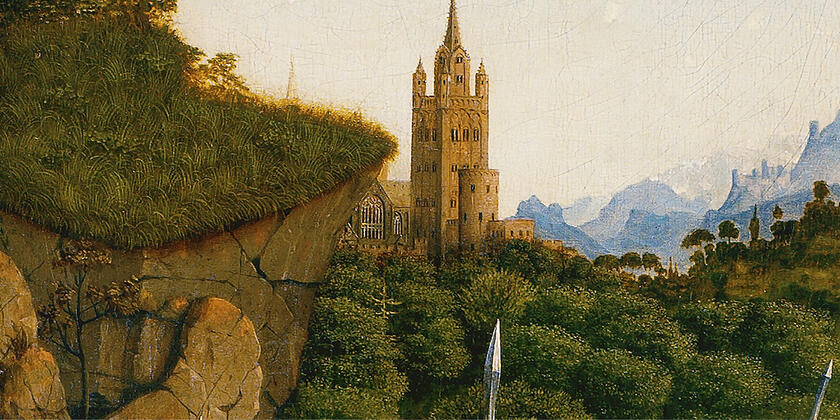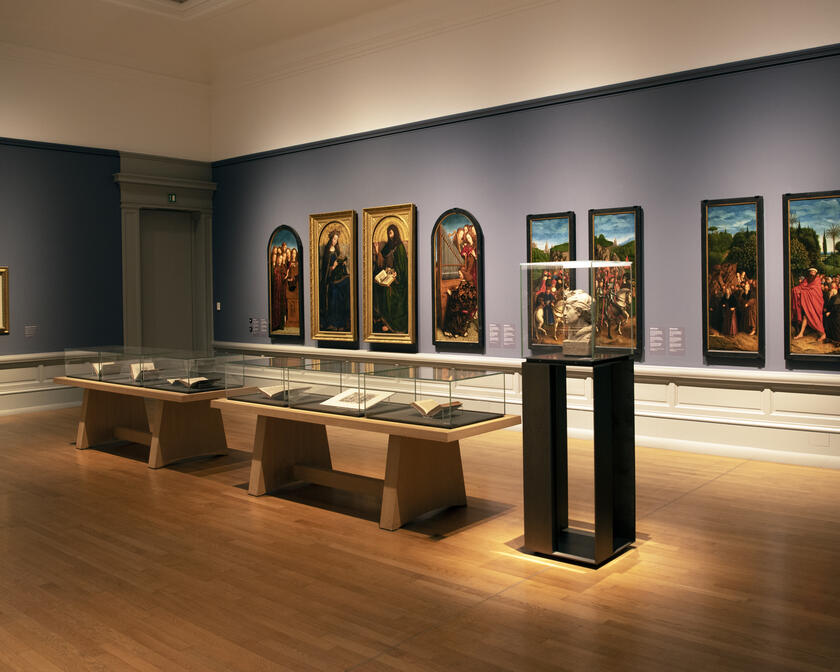
Once in a lifetime experience
The core of the exhibition consisted of the eight restored exterior panels of the Ghent Altarpiece. The altarpiece was exceptionally given on loan by St Bavo's Cathedral and the panels were displayed outside the cathedral for the first and last time in history.
The still to be restored paintings of Adam and Eve were also on display in the Museum of Fine Arts (MSK) in Ghent. The 10 remaining panels of the Ghent Altarpiece, including the Adoration of the Mystic Lamb, remained on display in St Bavo's Cathedral.
Across several exhibition rooms, the panels were displayed at eye height, allowing the public to marvel at their vivid colours, wonderful details and tangible textures from up close.
Only some twenty paintings by Jan Van Eyck have been preserved worldwide. Half of them were temporarily on display in MSK. They were shown together with works from Van Eyck’s studio and copies of paintings that have been lost. But also with more than 100 masterpieces from the late Middle Ages.
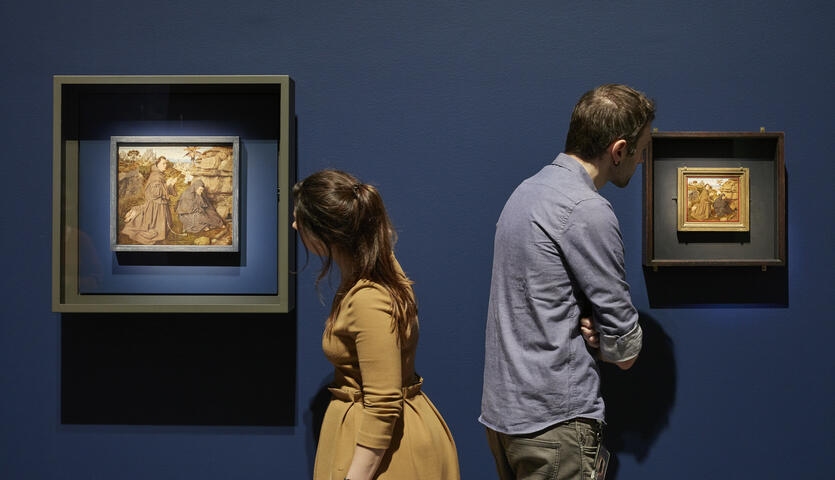
Jan Van Eyck never saw so many of his works brought together.
Even Jan Van Eyck never saw all these masterpieces together under one roof. In addition to the restored exterior panels of the Ghent Altarpiece and the Adam and Eve panels, no fewer than 13 other masterpieces were on display. These works of art had never been all at the same place before.
The last time that the panels of the Ghent Altarpiece were displayed outside St Bavo's Cathedral was in 1902.
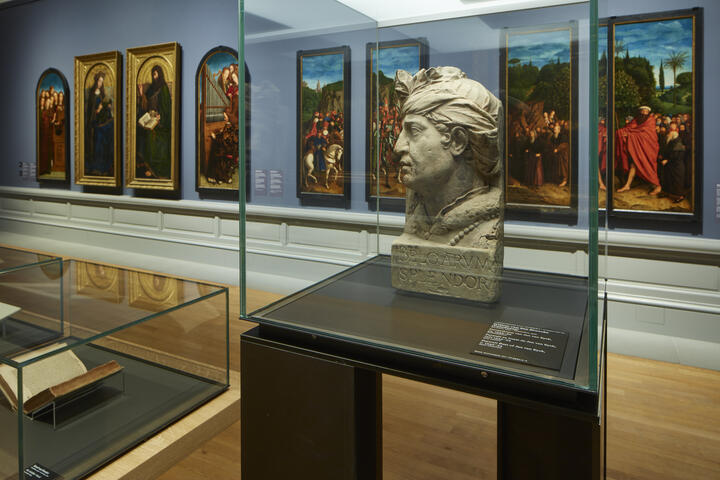
A fascinating optical revolution!
The optical revolution started by Jan Van Eyck 600 years ago remains fascinating to this day. This Flemish Master perfected the composition of oil paint and thus created unparalleled colour effects. In addition, he was the first painter to perfectly imitate gold without using gold leaf.
Jan Van Eyck observed the world, making his portraits and landscapes appear true to life. In his time, his technique for depicting clouds and the moon, splashing water in a fountain, distant snow-capped mountain tops and body hair was unprecedented.
In addition to his ability to imitate reality, he was also a master of creating illusions. The portrait of Joos Vijd and his wife Elisabeth Borluut, the commissioners of the Ghent Altarpiece, or the grisaille paintings of the Virgin Annunciate and the Archangel Gabriel on the Annunciation diptych are so lifelike that they appear to be located in shallow niches. With this kind of trompe-l’oeil effect, Jan Van Eyck seems to compete with reality itself. The archangel Gabriel appears as lifelike as if he were in a shallow niche.
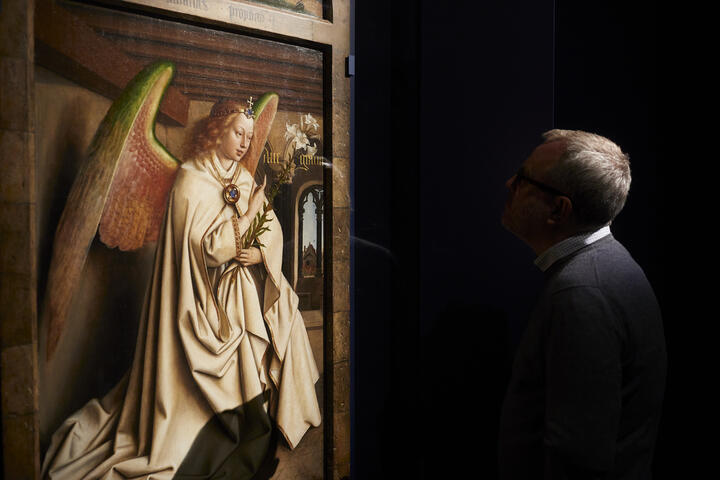
The optical revolution for everyone
Everyone had the opportunity to admire Jan Van Eyck’s mastery up close at MSK Ghent. The exhibition was accessible for visitors with a physical disability. Wheelchair users could take a barrier-free route to the Van Eyck exhibition.
Visitors with a hearing impairment could listen to the audio guide or guide on their hearing aid through a mobile hearing induction loop. In addition, the written audio texts were available on request.
The museum offered the room texts and adapted audio texts to visitors with a visual impairment. In addition, museum guides with tactile drawings were available for an optimal experience. Upon request, visitors could be assisted by someone who guided them through the exhibition and provided them with descriptions of the works of art.
There was also an autism-friendly road map to prepare a visit to the exhibition in the best possible way.
Van Eyck for all ages
Thanks to the family offer, you could discover old art through the eyes of the youngest museum visitors. When they entered, the youngest visitors received an audio guide for children aged between 6 and 12 (available in Dutch, French, English and German) as well as a Van Eyck booklet with stamps and fun assignments.
Van Eyck workshop
Twice a week, workshops supervised by the museum guides were organised in the Van Eyck workshop. Activities included sketching, portrait or miniature painting, brooch making, improving your observation skills, etc. This offer was included in the exhibition ticket.
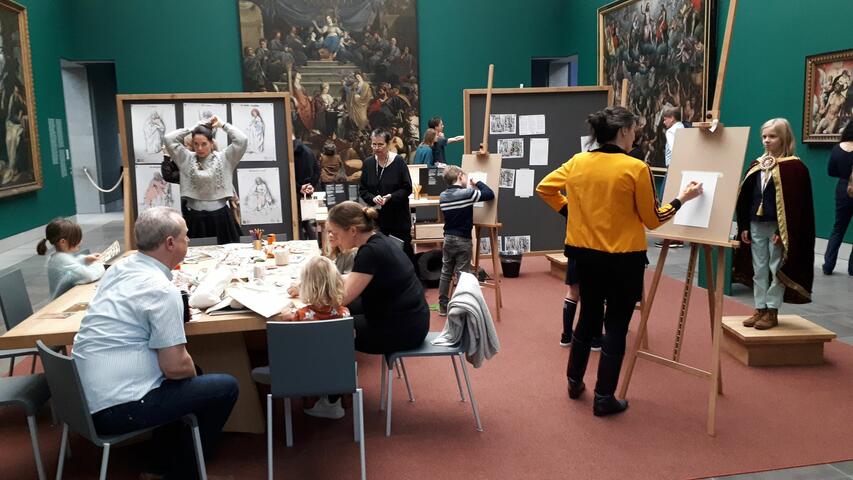
Van Eyck and the Ghent Altarpiece
Who was Jan Van Eyck and what makes the Ghent Altarpiece so special? Discover everything on these pages!
